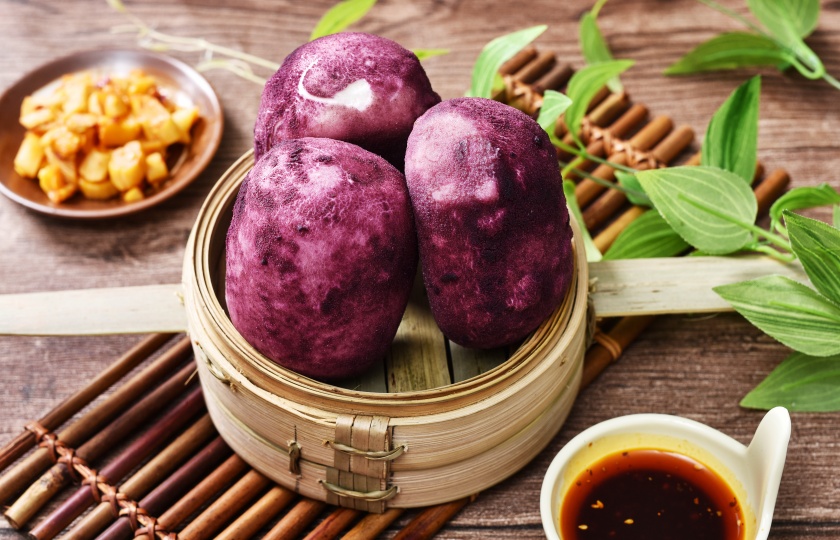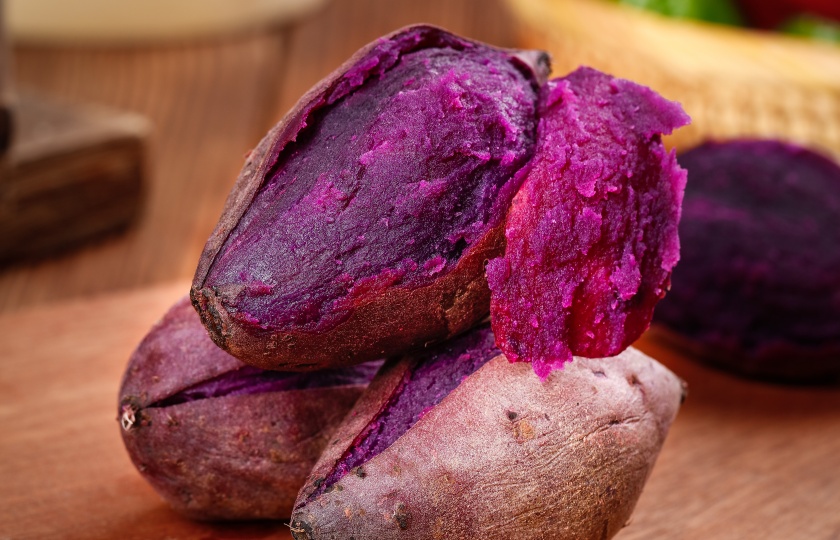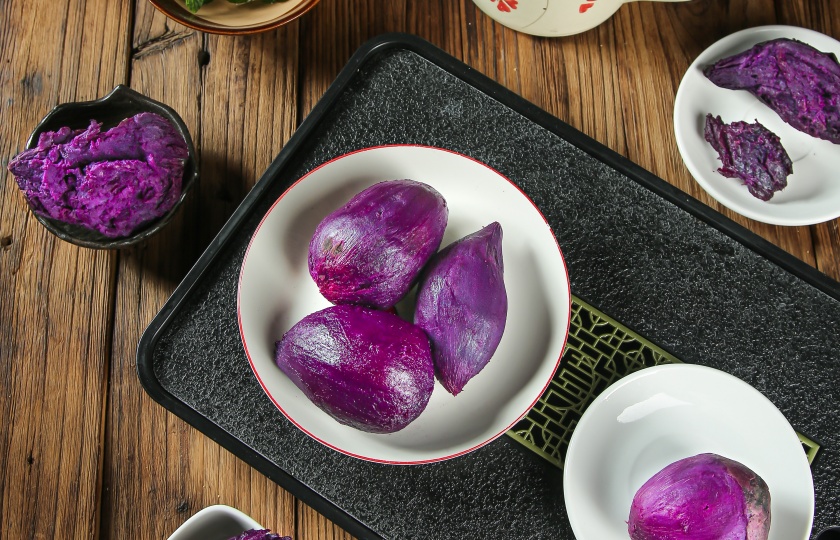Why Purple Potatoes Taste Different: A Flavorful Insight

If you haven't tried purple potatoes yet, you might not be able to imagine how unique their flavor is. Their aroma and texture will definitely give you a whole new perspective on potatoes.
Do purple potatoes taste different?
Compared to regular potatoes, purple potatoes typically have a more delicate and richer flavor.
Their texture is softer and creamier, with a subtle sweetness when cooked, offering more depth in taste. The vibrant color, rich in anthocyanins, also imparts a unique aroma.
Whether mashed, roasted, or stewed, purple potatoes elevate dishes with a distinctive and layered flavor, delivering a more complex and satisfying culinary experience.
Why does purple potato taste sweeter than regular potatoes?
This is primarily due to its higher content of natural sugars, especially glucose and fructose, which are released during cooking, enhancing the sweetness.
Additionally, the starch composition in purple potatoes differs from regular ones. Its starch breaks down more easily into sugars during cooking, which is why purple potatoes taste especially sweet and flavorful when roasted or baked.

Why does my purple potato taste bitter?
Purple potatoes can sometimes taste bitter due to several reasons:
Potatoes turning green: If the surface of the purple potato has green spots or you see green parts when you cut it, this could be due to exposure to light, which produces "solanine." This substance can make potatoes taste bitter and is not easily digestible. Be sure to remove any green portions.
Improper storage: Storing purple potatoes in damp or excessively warm conditions can cause spoilage or sprouting, leading to a bitter taste. Keep them in a dry, cool place away from direct sunlight.
Overripe potatoes: If the purple potatoes are overly ripe, the sugars inside may have overly converted, which could result in bitterness.
Overcooking: When roasting or boiling purple potatoes, excessive heat or cooking time can cause the surface to caramelize or burn, which may create a bitter flavor. Be sure to control cooking time and temperature appropriately to avoid overcooking.
How do I know if my purple potatoes have solanine?
It’s quite simple—check if your purple potato has green spots or has sprouted. Those green areas are where solanine tends to concentrate, and it’s best to avoid them. Also, if you taste a noticeable bitterness, that might be the solanine’s flavor.
When storing purple potatoes, keep them in a cool, dry place away from direct sunlight. This will help them stay fresh and prevent solanine buildup.

What is the best way to cook purple potatoes?
The key to cooking purple potatoes is preserving their color and texture. Here are some recommended methods:
Boiling: Cut the purple potatoes into chunks with their skin on, then boil in salted water for 10-15 minutes until tender. This method retains their nutrients and natural flavor.
Roasting: Slice or dice the potatoes, coat them with olive oil, sprinkle with salt and your favorite spices, then bake at 200°C (392°F) for 15-20 minutes. Roasting enhances their natural sweetness and aroma.
Steaming: Steam the purple potatoes for 15-20 minutes until soft. Steaming preserves both the nutrients and texture, yielding a tender and moist result.
Mashed Potatoes: Mash boiled purple potatoes with milk, butter, and salt. The result is a creamy, flavorful dish with a vibrant color.
What are the common varieties of purple potatoes?
Purple Peruvian: This is one of the classic purple potato varieties, with deep purple skin and flesh. It has a dry, fluffy texture, making it perfect for baking, frying, or making French fries, and it retains a beautiful color.
Purple Viking: The skin is deep purple with white streaks, and the flesh is creamy white. It has a moist texture, making it ideal for roasted potatoes or mashed potatoes with a sweet, mild flavor.
Magic Molly: The skin is smooth and deep purple, and the flesh is also purple with a rich color. It has a delicate texture, making it especially suitable for salads or as a side dish after steaming or boiling.
All Blue: Both the skin and flesh are light purple. It has a mild, moist texture, and when boiled or steamed, the color slightly fades. It’s great for soups or steamed dishes.
Purple Fingerling: These small, elongated potatoes have purple skin and flesh, with a rich flavor. They are perfect for roasting or serving as a side dish.























